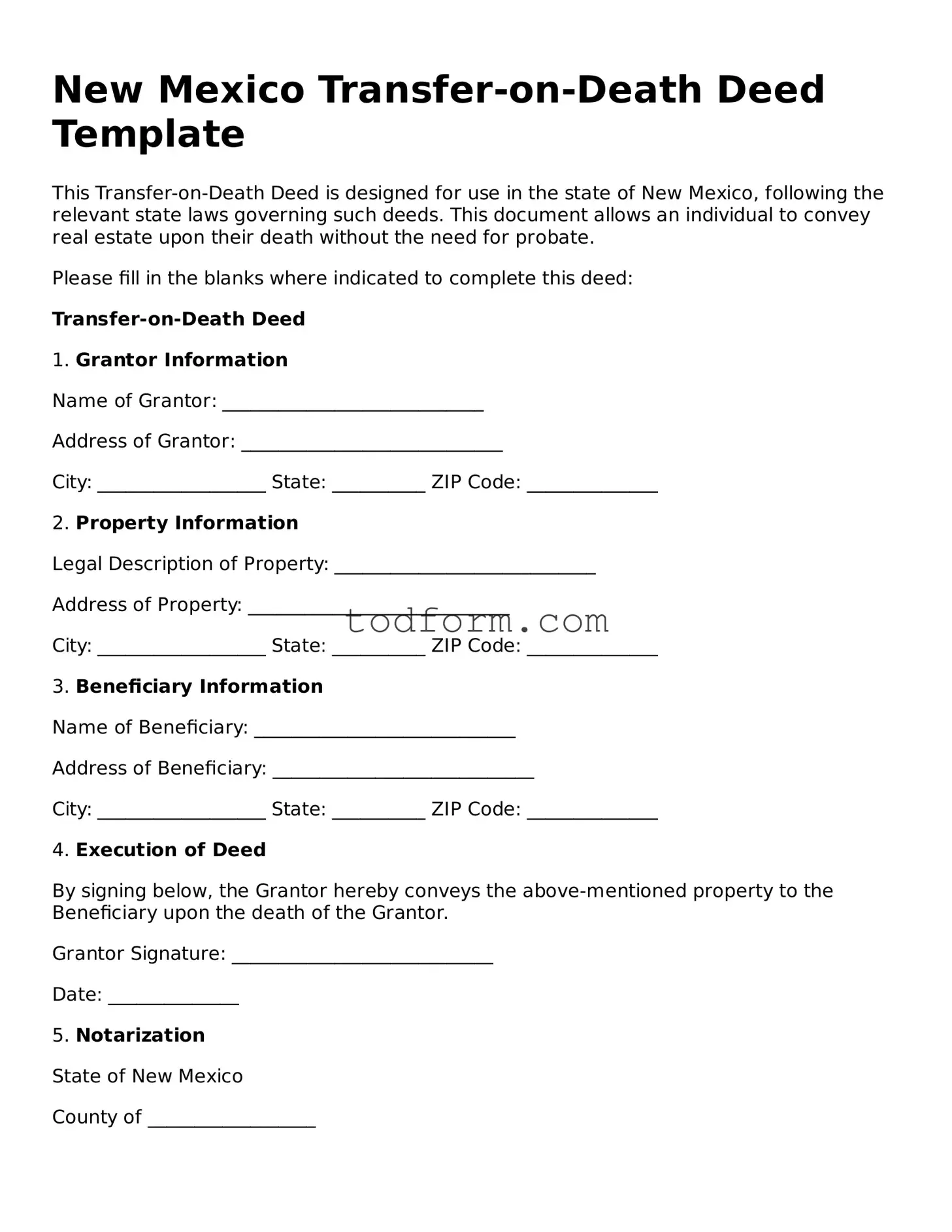New Mexico Transfer-on-Death Deed Template
This Transfer-on-Death Deed is designed for use in the state of New Mexico, following the relevant state laws governing such deeds. This document allows an individual to convey real estate upon their death without the need for probate.
Please fill in the blanks where indicated to complete this deed:
Transfer-on-Death Deed
1. Grantor Information
Name of Grantor: ____________________________
Address of Grantor: ____________________________
City: __________________ State: __________ ZIP Code: ______________
2. Property Information
Legal Description of Property: ____________________________
Address of Property: ____________________________
City: __________________ State: __________ ZIP Code: ______________
3. Beneficiary Information
Name of Beneficiary: ____________________________
Address of Beneficiary: ____________________________
City: __________________ State: __________ ZIP Code: ______________
4. Execution of Deed
By signing below, the Grantor hereby conveys the above-mentioned property to the Beneficiary upon the death of the Grantor.
Grantor Signature: ____________________________
Date: ______________
5. Notarization
State of New Mexico
County of __________________
On this ______ day of ______________, 20___, before me, a Notary Public, personally appeared ____________________________ (Grantor's Name) known to me (or satisfactorily proven) to be the person whose name is subscribed to this instrument, and acknowledged that he/she executed the same for the purposes therein contained.
Witness my hand and official seal.
Notary Public Signature: ____________________________
My Commission Expires: ____________________________
This document should be recorded with the County Clerk's office in the county where the property is located for it to be effective. Always consider seeking a qualified attorney before creating legal documents.
